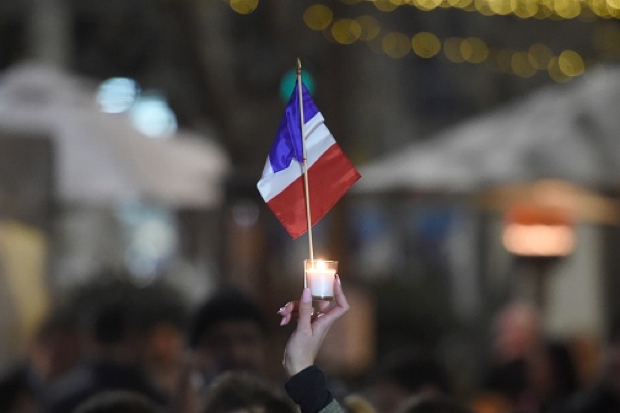In Saturday’s Guardian, Natalie Nougayrède, the former managing editor of Le Monde, wrote that in the days following the slaughter of 84 people in Nice by an Islamic terrorist ‘incidents of open, blatant, anti-Muslim hatred have sparked a new, worrying phase’ in France.
She didn’t elaborate on what form this hatred took, nor come up with any examples, but Madame Nougayrède was adamant that intolerance among her compatriots was on the rise following four years of bloody religious mayhem that has left more than 200 dead in terrorist attacks on French soil. Then today comes a new attack, the brutal murder by two Islamic terrorists of an elderly priest as he conducted mass in his Normandy church. According to initial reports Father Jacques Hamel had his throat slit and a member of the congregation was seriously wounded.
Douglas Murray and Haras Rafiq discuss Europe’s summer of terror:
I take the opposite view to Nougayrède. Living in France, I am impressed with the tolerance shown by the French in the face of the war being waged on them by Islamic extremism. This spring was marked by several violent demonstrations between left-wing protestors up in arms against minor tweaks to France’s labour laws. Yet since Mohamed Merah launched this onslaught of terror against France with the murders in March 2012 of three soldiers and four Jews (three of whom were children), the French population has taken to the streets only in a spirit of solidarity. Even after 130 Parisians were killed in November’s attacks, the people heeded President Hollande’s calls to remain united.
Today’s attack on the church in Saint-Etienne-du-Rouvray, in Normandy, wasn’t the first time that Islamic extremists have targeted a Catholic place of worship. On a Sunday in April last year a terrorist was on his way to attack a church in Villejuif, a suburb of Paris, when he shot himself in the foot during a struggle with a woman whose car he wanted. The woman was shot dead.
As I reported for the Spectator at the start of this year, France has been turning into a religious battleground for a number of years. The majority of attacks have been against Jews and Christians. A report in Liberation found that in 2014 there were 591 acts of arson or vandalism against religious buildings in France, of which 467 (79 percent) were Christian. Synagogues had been targeted less because of increased security following Merah’s attacks. Nonetheless in January a 15-year-old Turkish-Kurd boy attacked a Jewish teacher with a machete in broad daylight in Marseille. It was the third such attack in three months in the Mediterranean city. The attacks prompted Zvi Ammar, head of Marseille’s Israelite Consistory, to advise Jews in the city to ‘remove the kippah during this troubled time until better days…as soon as we are identified as Jewish we can be assaulted and even risk death.’
The French Prime Minister Manuel Valls, whose government has been under sustained criticism following the Nice attacks, tweeted his ‘horror’ at today’s killing, adding: ‘All of France and all Catholics are hurt,’ while the foreign minister, Jean-Marc Ayrault, has called on the French to stay united. The objective of the attacks, he said, was to ‘divide our societies, our democracies, our harmony between believers and non-believers, between Catholics and Muslims.’
The problem for Ayrault is that few people in France believe any longer in the ability of their government to protect them, more so than ever after police sources told the media that one of the two perpetrators was on a terror-watch list. They are frightened, they are furious, and their tolerance is fraying.
Gavin Mortimer is the author of ‘The Men Who Made the SAS: a History of the Long Range Desert Group in WW2’. He lives in France.







Comments